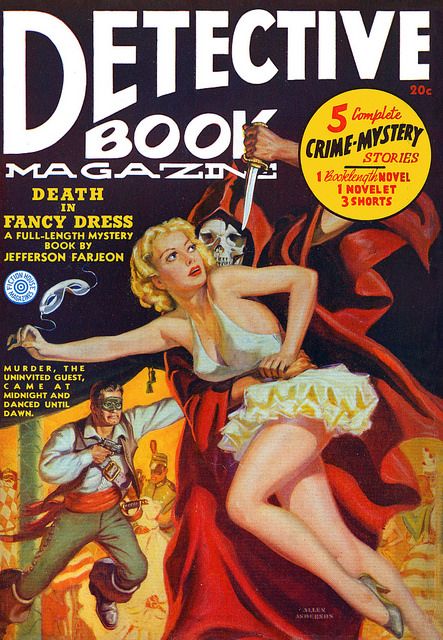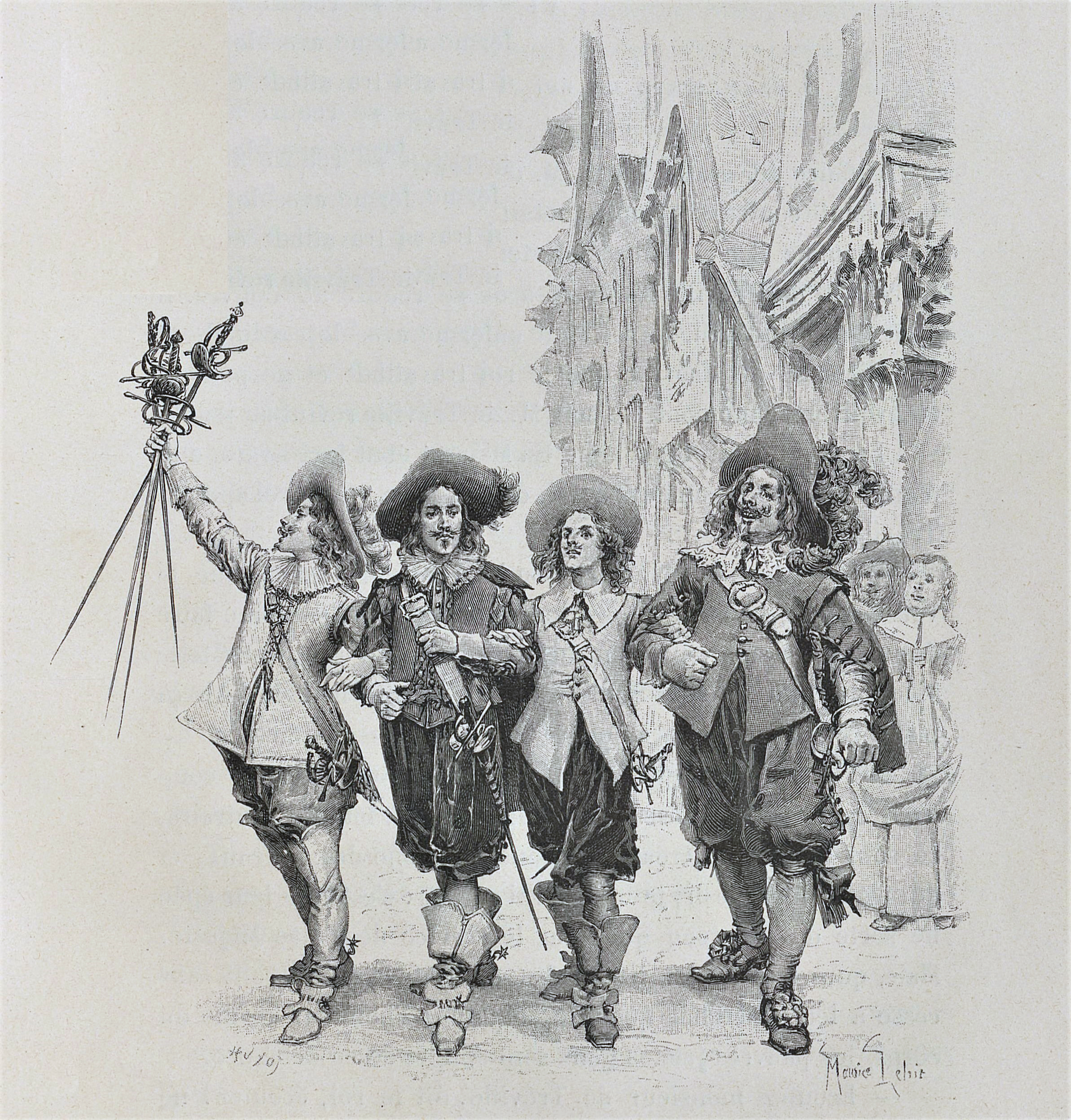|
Fiction House
Fiction House was an American publisher of pulp magazines and comic books that existed from the 1920s to the 1950s. It was founded by John B. "Jack" Kelly and John W. Glenister.Saunders, David"JACK BYRNE (1902-1972),"Field Guide to Wild American Pulp Artists (2015). Accessed Mar. 14, 2017. By the late 1930s, the publisher was Thurman T. Scott. Its comics division was best known for its pinup-style good girl art, as epitomized by the company's most popular character, Sheena, Queen of the Jungle. Leadership and location The company's original location was 461 Eighth Avenue in New York City. At the end of 1929, a ''New York Times'' article referred to John B. Kelly as "head" of Fiction House, Inc., and a new location of 271 Madison Avenue. In late 1932, John W. Glenister was president of Fiction House and his son-in-law, Thurman T. Scott, was secretary of the corporation. By the end of the 1930s Scott had risen to the title of publisher. In January 1950, the Manhattan-based com ... [...More Info...] [...Related Items...] OR: [Wikipedia] [Google] [Baidu] |
New York City
New York, often called New York City or NYC, is the most populous city in the United States. With a 2020 population of 8,804,190 distributed over , New York City is also the most densely populated major city in the United States, and is more than twice as populous as second-place Los Angeles. New York City lies at the southern tip of New York State, and constitutes the geographical and demographic center of both the Northeast megalopolis and the New York metropolitan area, the largest metropolitan area in the world by urban landmass. With over 20.1 million people in its metropolitan statistical area and 23.5 million in its combined statistical area as of 2020, New York is one of the world's most populous megacities, and over 58 million people live within of the city. New York City is a global cultural, financial, entertainment, and media center with a significant influence on commerce, health care and life sciences, research, technology, educa ... [...More Info...] [...Related Items...] OR: [Wikipedia] [Google] [Baidu] |
Detective Book Magazine
''Detective Book Magazine'' was an American pulp science fiction magazine, published by Fiction House in 1930 to 1931 and from 1937 to 1952. Each edition of ''Detective Book Magazine'' contained the complete text of a detective novel. Most editions also contained one or more shorter detective fiction stories. Its main competitor was Street & Smith's ''Detective Story Magazine ''Detective Story Magazine'' was an American magazine published by Street & Smith from October 15, 1915, to Summer, 1949 (1,057 issues). It was one of the first pulp magazines devoted to detective fiction and consisted of short stories and seri ...''. Publication history ''Detective Book Magazine'' was first published in April 1930 and monthly issues followed until the magazine was discontinued after the September 1931 edition. The magazine was revived with the publication of an issue in 1937, and until 1952 the magazine was published as a quarterly (though in some years, only three issues were publis ... [...More Info...] [...Related Items...] OR: [Wikipedia] [Google] [Baidu] |
The Count Of Monte Cristo
''The Count of Monte Cristo'' (french: Le Comte de Monte-Cristo) is an adventure novel written by French author Alexandre Dumas (''père'') completed in 1844. It is one of the author's more popular works, along with '' The Three Musketeers''. Like many of his novels, it was expanded from plot outlines suggested by his collaborating ghostwriter Auguste Maquet. The story takes place in France, Italy, and islands in the Mediterranean during the historical events of 1815–1839: the era of the Bourbon Restoration through the reign of Louis-Philippe of France. It begins on the day that Napoleon left his first island of exile, Elba, beginning the Hundred Days period when Napoleon returned to power. The historical setting is a fundamental element of the book, an adventure story centrally concerned with themes of hope, justice, vengeance, mercy, and forgiveness. It centers on a man who is wrongfully imprisoned, escapes from jail, acquires a fortune, and sets about exacting revenge ... [...More Info...] [...Related Items...] OR: [Wikipedia] [Google] [Baidu] |
Alexandre Dumas, Père
Alexandre Dumas (, ; ; born Dumas Davy de la Pailleterie (), 24 July 1802 – 5 December 1870), also known as Alexandre Dumas père (where '' '' is French for 'father', to distinguish him from his son Alexandre Dumas fils), was a French writer. His works have been translated into many languages and he is one of the most widely read French authors. Many of his historical novels of adventure were originally published as serials, including ''The Count of Monte Cristo'', '' The Three Musketeers'', '' Twenty Years After'' and '' The Vicomte of Bragelonne: Ten Years Later''. His novels have been adapted since the early twentieth century into nearly 200 films. Prolific in several genres, Dumas began his career by writing plays, which were successfully produced from the first. He also wrote numerous magazine articles and travel books; his published works totalled 100,000 pages. In the 1840s, Dumas founded the Théâtre Historique in Paris. His father, General Thomas-Alexandre Dumas ... [...More Info...] [...Related Items...] OR: [Wikipedia] [Google] [Baidu] |
Swashbuckling
A swashbuckler is a genre of European adventure literature that focuses on a heroic protagonist stock character who is skilled in swordsmanship, acrobatics, guile and possesses chivalrous ideals. A "swashbuckler" protagonist is heroic, daring, and idealistic: he rescues damsels in distress, protects the downtrodden, and uses duels to defend his honor or that of a lady or to avenge a comrade. Swashbucklers often engage in daring and romantic adventures with bravado or flamboyance. Swashbuckler heroes are gentleman adventurers who dress elegantly and flamboyantly in coats, waistcoats, tight breeches, large feathered hats, and high leather boots, and they are armed with the thin rapiers used by aristocrats. Swashbucklers are not unrepentant brigands or pirates, although some may rise from such disreputable stations and achieve redemption. [...More Info...] [...Related Items...] OR: [Wikipedia] [Google] [Baidu] |
Jack Kirby
Jack Kirby (born Jacob Kurtzberg; August 28, 1917 – February 6, 1994) was an American comics artist, comic book artist, writer and editor, widely regarded as one of the medium's major innovators and one of its most prolific and influential creators. He grew up in New York City and learned to draw cartoon figures by tracing characters from comic strips and editorial cartoons. He entered the nascent comics industry in the 1930s, drawing various comics features under different pen names, including Jack Curtiss, before ultimately settling on Jack Kirby. In 1940, he and writer-editor Joe Simon created the highly successful superhero character Captain America for Timely Comics, predecessor of Marvel Comics. During the 1940s, Kirby regularly teamed with Simon, creating numerous characters for that company and for National Comics Publications, later to become DC Comics. After serving in the European Theater of Operations, United States Army, European Theater in World War II, Kirby pr ... [...More Info...] [...Related Items...] OR: [Wikipedia] [Google] [Baidu] |
Don Markstein's Toonopedia
Don Markstein's Toonopedia (subtitled A Vast Repository of Toonological Knowledge) is an online encyclopedia of print cartoons, comic strips and animation, initiated February 13, 2001. Donald D. Markstein, the sole writer and editor of Toonopedia, termed it "the world's first hypertext encyclopedia of toons" and stated, "The basic idea is to cover the entire spectrum of American cartoonery." Markstein began the project during 1999 with several earlier titles: he changed Don's Cartoon Encyberpedia (1999) to Don Markstein's Cartoonopedia (2000) after learning the word "Encyberpedia" had been trademarked. During 2001, he settled on his final title, noting, "Decided (after thinking about it for several weeks) to change the name of the site to Don Markstein's Toonopedia, rather than Cartoonopedia. Better rhythm in the name, plus 'toon' is probably a more apt word, in modern parlance, than 'cartoon', for what I'm doing." Comic strips Toonopedia author Donald David Markstein (March 2 ... [...More Info...] [...Related Items...] OR: [Wikipedia] [Google] [Baidu] |
Connecticut Historical Society
The Connecticut Historical Society (CHS) is a private, non-profit organization that serves as the official statewide historical society of Connecticut. Established in Hartford in 1825, the CHS is one of the oldest historical societies in the US. The Connecticut Historical Society is a non-profit museum, library, archive and education center that is open to the public. The CHS houses a research center containing 270,000 artifacts and graphics and over 100,000 books and pamphlets. It has one of the largest costume and textile collections in New England. History In 1825, a petition signed by citizens of Connecticut including Thomas Robbins, John Trumbull, Thomas Day, and William W. Ellsworth, was presented to the Connecticut General Assembly, calling for the establishment of a society to preserve historical materials. The General Assembly gave its consent, and the Connecticut Historical Society was established to collect objects important to the history of the Connecticut, and th ... [...More Info...] [...Related Items...] OR: [Wikipedia] [Google] [Baidu] |
Jumbo Comics
''Jumbo Comics'' was an adventure anthology comic book published by Fiction House from 1938– 1953. ''Jumbo Comics'' was Fiction House's first comics title; the publisher had previously specialized in pulp magazines. The lead feature for ''Jumbo Comics''' entire run was Sheena, Queen of the Jungle. Notable creators who worked on ''Jumbo Comics'' include Jack Kirby (working under a variety of pseudonyms), Bob Kane, Matt Baker, Mort Meskin, Lou Fine, Bob Powell, Mort Leav, Art Saaf, Dick Briefer, Lily Renée, and Ruth Roche. Jerry Iger was ''Jumbo Comics''' art director for its entire run. Publication history By the late 1930s, Fiction House publisher Thurman T. Scott expanded the company from pulp magazines to comic books, an emerging medium that began to seem a viable adjunct to the fading pulps. Receptive to a sales call by Eisner & Iger, one of the prominent "packagers" of that time that produced complete comic books on demand for publishers looking to enter the field, ... [...More Info...] [...Related Items...] OR: [Wikipedia] [Google] [Baidu] |
Eisner & Iger
Eisner & Iger was a comic book "packager" that produced comics on demand for publishers entering the new medium during the late-1930s and 1940s period fans and historians call the Golden Age of Comic Books. Many of comic books' most significant creators, including Jack Kirby, entered the field through its doors. The company, formally titled the Eisner and Iger Studio, was also known as Syndicated Features Corporation. Will Eisner, in a 1997 interview, referred to the company as both "Eisner & Iger" and the "Art Syndication Company".Eisner interview ''Jack Kirby Collector'' #June 16, 1997 It existed from 1936 to 1939. In addition to comic books, the company also sold color comic strips, such as ''Adventures of the Red Mask'' and ''Pop's Night Out'', to newspapers. Origin The orig ...[...More Info...] [...Related Items...] OR: [Wikipedia] [Google] [Baidu] |
Planet Stories
''Planet Stories'' was an American pulp magazine, pulp science fiction magazine, published by Fiction House between 1939 and 1955. It featured interplanetary adventures, both in space and on some exoplanet, other planets, and was initially focused on a young readership. Malcolm Reiss was editor or editor-in-chief for all of its 71 issues. ''Planet Stories'' was launched at the same time as ''Planet Comics'', the success of which probably helped to fund the early issues of ''Planet Stories''. ''Planet Stories'' did not pay well enough to regularly attract the leading science fiction writers of the day, but occasionally obtained work from well-known authors, including Isaac Asimov and Clifford D. Simak. In 1952 ''Planet Stories'' published Philip K. Dick's Beyond Lies the Wub, first sale, and printed four more of his stories over the next three years. The two writers most identified with ''Planet Stories'' are Leigh Brackett and Ray Bradbury, both of whom set many of their stori ... [...More Info...] [...Related Items...] OR: [Wikipedia] [Google] [Baidu] |






